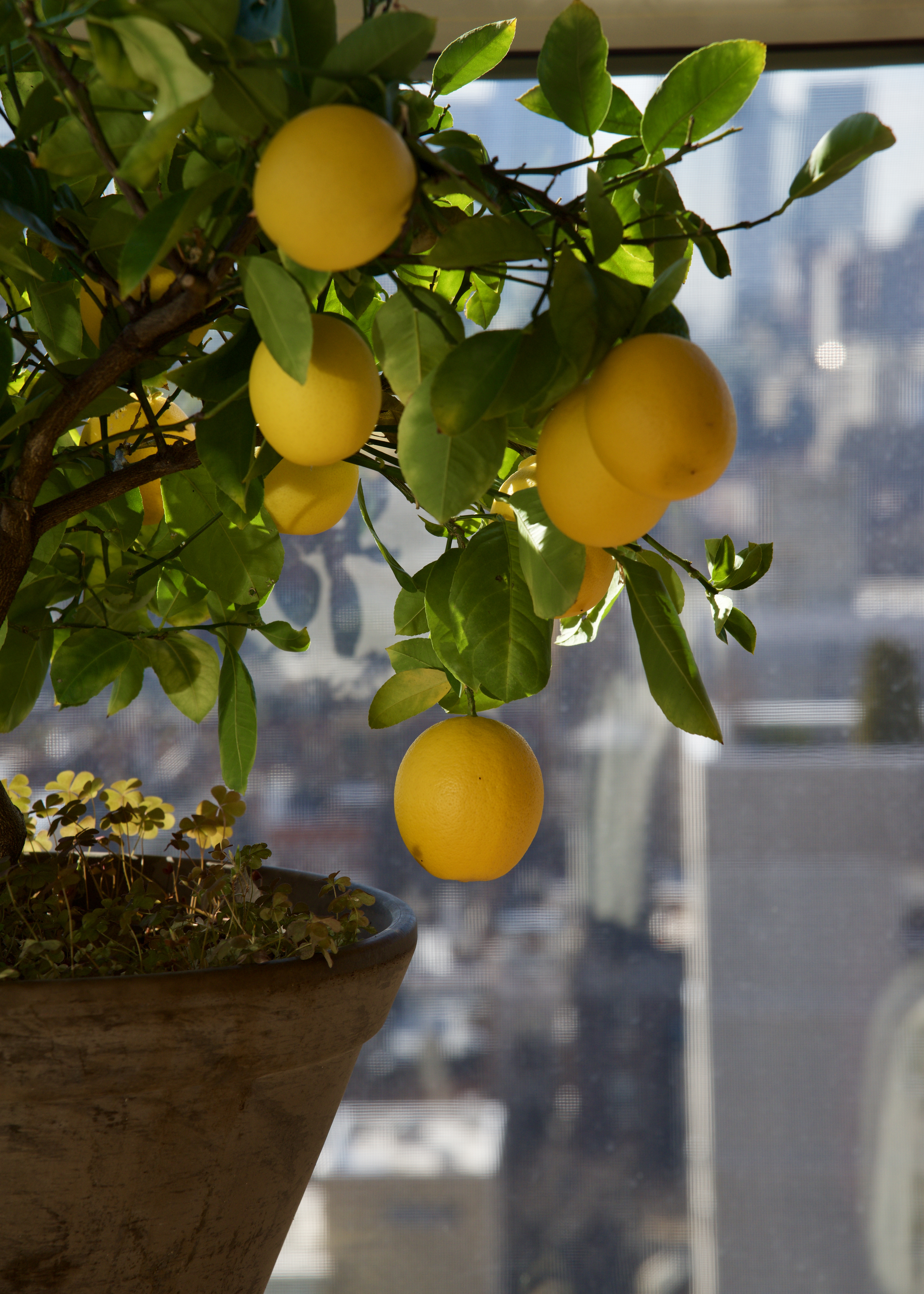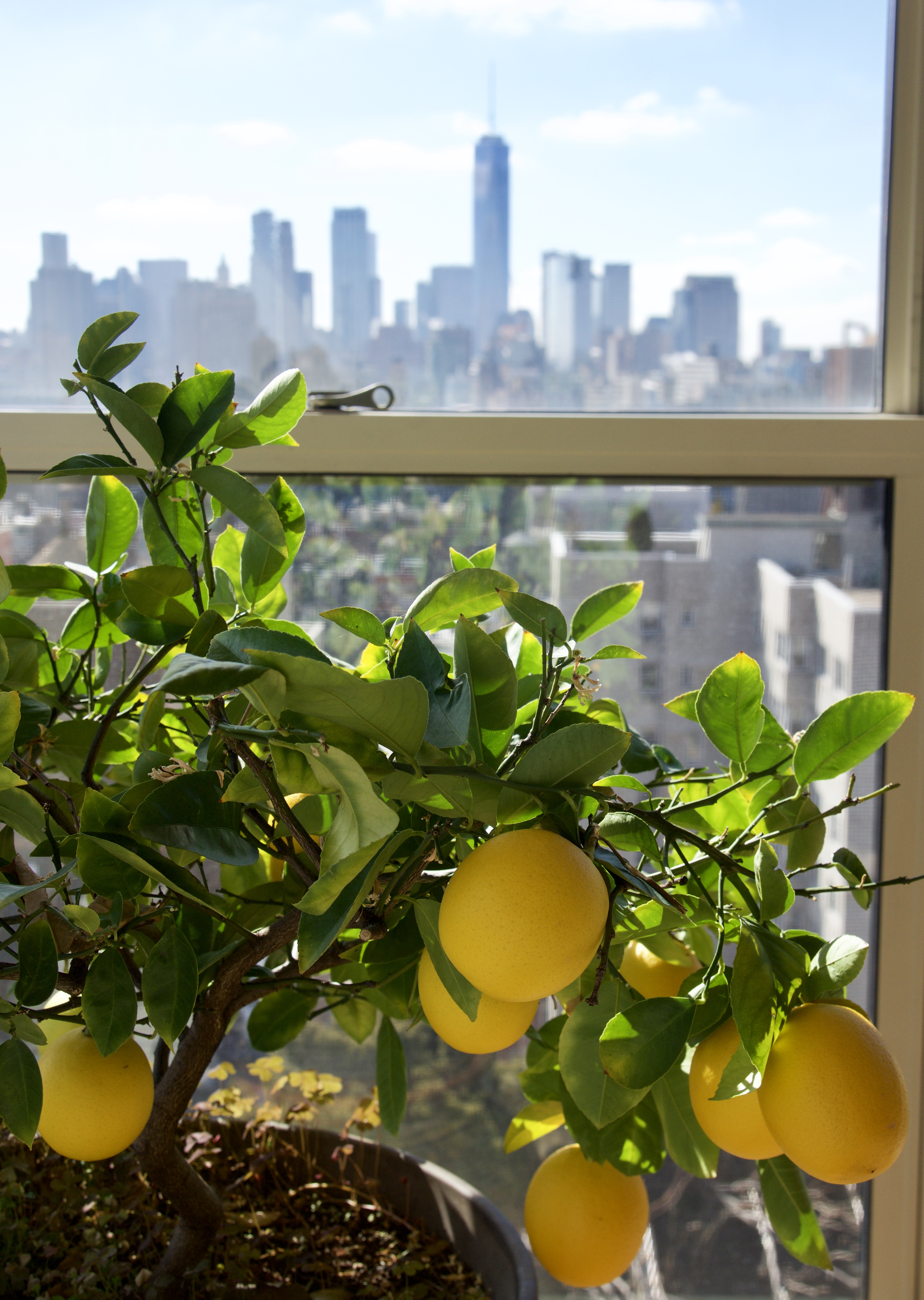
How to Care for an Indoor Lemon Tree
Whether enjoying the benefits of drinking hot lemon water in the morning, making white coffee, or simply filling a dish with citrus as a table decoration, our staff absolutely loves lemons. We’ve used them to make stamps; we’ve travelled the country in pursuit of the most beautiful varieties; and we also cook with them regularly.
Our founder grew up in a West Coast home with a garden full of potted Meyer Lemons, and in her opinion, that is the best indoor citrus plant you can buy. The Meyer Lemon is beautiful, iconic, and easy to care for; you just need sun, the correct soil, fertilizer, and a perfected watering schedule.
For those looking to become a #PlantMom to a citrus tree, we recommend buying indoor lemon trees from Four Winds in California— that’s where we got the Meyer Lemon Tree in this article’s photos. (Be advised that Four Winds offers plenty of advice for caring for this plant on their site– every tree we have purchased from them has been a success.)
For fertilizer, we recommend [easyazon_link identifier=”B01MRJIYVM” locale=”US” tag=”gardcoll03-20″]Dr. Earth Natural Wonder[/easyazon_link] to ensure that the tree is well nourished from the roots up (this is a critical step in caring for citrus that most novices overlook).
Some Tips For Growing Indoor Lemons
- As Four Winds points out, dwarf citrus trees are especially well-suited to container growing, which keeps them at a manageable size.
- Weather it! Condition your lemon tree to the weather if you have changing seasons– put the pot out in the day and bring it in at night so that they slowly adjust to changing temperatures while maximizing direct sun. Eventually, depending on your growing region, you may be able to leave them out full time.
- Comfy Commode! Remember to plant your tree in an appropriately sized pot with adequate drainage. A 12″, 5-gallon pot with 4-5 drainage holes in the bottom is ideal for a tree that is 2-3 years old, according to Four Winds.
- Fertilizer! Apply the fertilizer we mentioned above only to the soil surface of a plant whose roots have settled. Don’t use a soil mix that contains fertilizer, and when you do apply fertilizer to the surface, don’t mix it in. You don’t want to disturb those roots!
- Drainage! Elevate pots above standing drainage water– you want soil at about 50% moisture at all times.
- Sun! Face indoor citrus plants to the south or southeast– like the one we photographed facing downtown Manhattan, above. Citrus needs about 8 hours of sunlight per day, and if they can’t get it, you should invest in [easyazon_link identifier=”B06XR5RGCZ” locale=”US” tag=”gardcoll03-20″] grow lights[/easyazon_link].
Evocative of both romantic Italian vistas and lush culinary scenes, Meyer Lemons are a functional and beautiful decor element. We love the way they look, as they add a refined elegance to any window.
Plus, lemons are so trendy right now: they are having a renaissance of visibility given the success of Beyoncé’s era-defining Lemonade, N.E.R.D. & Rihanna’s “Lemon,” and the general obsession that plant-based Instagrammers, models, and actresses have with hot lemon water. Meyer Lemon is also the key ingredient in Sqirl’s famous pesto sorrel rice bowl, and as well as Bedford Cheese Shop’s baked lemon ricotta. In 2018, moreover, this particular fruit is more relevant and visible than ever. So whether you’re a plant lover, a food lover, or simply a design lover, this is one indoor tree that can do no wrong.




































